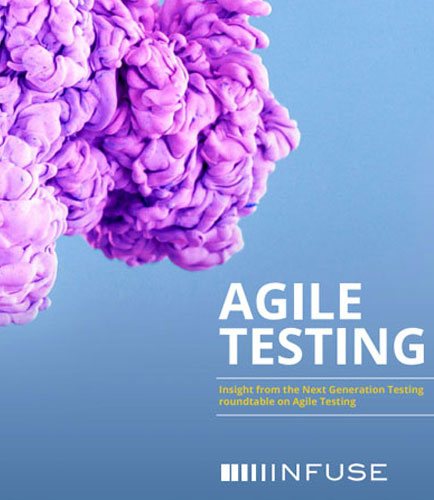
PROCESSING. PLEASE WAIT...


White Paper: Nisum
Agile testing and development is growing in popularity and smart QA/testing teams keep pace with current development trends. Implementing Test Automation in Agile Environments is quite challenging in the present scenario.
This whitepaper is based on a round table discussion on Agile Testing. It discusses about maintaining and reviewing automated tests in agile Environments and different agile testing methodologies.
Key Takeaways from this whitepaper:
Enterprise Agile: How can you manage a project that has multiple Agile delivery teams?
Test Automation in Agile: How can you get valuable tests automated during a sprint?
Test Estimation: How can developers and testers effectively estimate one another’s’ stories?
Test Management: Role of the Test Manager in Agile

By: SoftFluent
The objective of this white paper is to describe the software development challenge, clarify its root causes and show how SoftFluent addresses it through its CodeFluent Entities model-first software factory and associated methodology. Ultimately, the CodeFluent Entities approach is a robust and productive tool that enables successful software development projects to be achieved. Possibly, this approach is not unique, but this one has proved to be of great value to our customers so far. This White paper conclude in chapter 8 by exposing why model-first is so structurally important in finding the solution to the evolution challenge detailed in this white paper.
By: KINGSTAR
OEMs traditionally used DSP-based hardware, plugged into a PC, for motion control. But new software-based solutions have challenged this approach, claiming equal or better performance at lower cost. How does soft motion really compare to hardware? In this whitepaper, we break it down component-by-component for a down-to-the-dollar cost and performance comparison. Topics covered include: Challenges with the traditional hardware approach How soft motion solves those challenges Performance comparison: calculations, axis control, adding axes and machine vision Cost comparison cost and length, ability to scale, necessary hardware Cost-per-item breakdown showing that soft motion costs 44% less than hardware Learn how software-based motion control actually compares to hardware with real-life scenarios and real-dollar cost comparisons. If you’re considering soft motion, start here.


 2025 All Rights Reserved | by: www.ciowhitepapersreview.com
2025 All Rights Reserved | by: www.ciowhitepapersreview.com